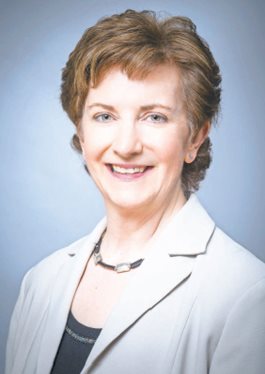
The field of breast imaging has taken leaps forward over the last decade, first with digital mammography, and then with 3D tomosynthesis. Lawrence General Hospital is fortunate to have the physician who pioneered the technology at Mass General, Betty Rafferty, MD, overseeing the program and caring for patients as Director of Breast Imaging of the hospital.
“
While there is general agreement that screening mammography is critical for the early detection of breast cancer, there has been much debate over the years around how often women should be screened and beginning at what age,” Dr. Rafferty said.
“
There has also been a great deal of discussion around the frequency of false positive results with traditional 2D mammography. False positive tests require a second imaging study, which exposes women to another dose of radiation, and, of course, produces a lot of unnecessary anxiety.”
Working with a group of colleagues from across the country, Dr. Rafferty has published some new research (Breast Cancer Research and Treatment, August 2017) looking at the relative benefits of tomosynthesis on breast cancer detection, to better inform this issue of age.
Rafferty and her col-leagues looked at a cohort of more than 450,000 patient records, to compare detection rates for those who had 2D digital mammography and those who had 3D tomosynthesis, with age as the defining variable. The investigators also looked at the incidence of false positives and how use of 3D technology might affect those rates.
It turns out, women in their 40s have the highest increase in early detection using 3D technology — a 69 percent increase over 2D technology. In fact, the rate of cancer diagnosis for the women in their 40s was actually higher than the diagnosis rate for women in the 50s undergoing 2D mammography. This same group of younger women also saw a 22 percent decrease in the need for a repeat study because of false positives, compared to 2D mammography — the highest decrease in false positives in any age group.
“
The magnitude of performance gains for mammography using tomosynthesis for women in their 40s strongly suggests that tomosynthe-sis screening beginning at age 40 should be the new standard of care,” Dr. Rafferty said, “
and would have particular impact for these younger women because they tend to be diagnosed with more aggressive cancers.”
Rafferty also led a group of investigators doing an analysis of the benefits of 3D imaging on women with denser breast tissues (Journal of the American Medical Association, April, 2016), for whom traditional 2D mammography can be problematic, and for whom, some evidence suggests, the risk of developing cancer is higher.
This research validated the benefits of 3D tomosynthesis for women with all breast densities. For those with dense breasts, there was a remarkable 48 percent increase in invasive cancer detection, with a 14 percent decrease in the rate of false positives needed additional imaging.
“
I am very proud that Lawrence General offers 3D tomosynthesis for all our patients“, Dr. Rafferty said. Lawrence General Hospital’s mammography units are licensed by the Massachusetts Department of Public Health’s radiation control program.
“
Mammography saves lives,” she added. “
October is Breast Cancer Aware-ness Month and I want to encourage women not only to have a mammogram, but to make sure that they are having the best mammogram — one that includes tomosynthesis. It could save your life.”